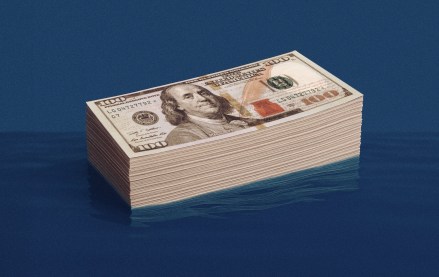Save 50% on a 3-month Digiday+ membership. Ends Dec 5.
Conde Nast Britain’s 18-person native ad team accounts for half its digital revenue

Condé Nast Britain has been in the native advertising business for years, but it has only had a dedicated team producing, distributing and selling it for the last six months. In that time, native advertising revenue has taken a considerable jump across its portfolio, which includes Wired, GQ and Vogue. This year, native accounted for half of its digital ad revenue, up from 25 percent in 2015. (The remainder comes from display advertising, programmatic and sponsorships.)
The publisher is planning more hires to the centralized custom-content team, which is currently 18 people spread across commercial, creative and production. In 2017, more roles will be added.
British GQ launched a dedicated video channel on its site in February, which runs a range of mini documentaries and series, and hosts archive content. Now roughly 30 percent of video content on the channel is commercially funded by advertisers. The editorial teams at Condé’s titles come up with the concepts, which are then paired with advertisers.
One of its best case studies is a “Two whiskies with David Beckham and Jack Whitehall” video for whisky brand Haig Club. During the eight-minute video, Whitehall informally interviews Beckham as the pair make each other a cocktail with Haig Club whisky. It has generated over 700,000 views on YouTube within six months.
Another is this “Power lunch” video produced with Cartier, featuring YouTube influencer Jimmy Chapman and Michelin star chef Jason Atherton. The pair talk about how they’ve got where they are today, over lunch at one of Atherton’s London restaurants. Throughout the conversation, the camera zooms in on the Cartier watch worn by Atherton. The video’s has had over 120,000 views on YouTube since May.
Much of the growth spurt in its native advertising revenue is due to the five data analysts on the team, according to Condé Nast group digital director Wil Harris. Their job is to work closely with clients on figuring out where and how to distribute and promote the content across platforms.
“We start our branded content production from the same point as our editorial production,” said Harris. “What’s trending now? What is going to SEO well? What’s going to work on social? What does our audience want to see? We use a range of tools to try and scope out exactly what’s going to work best, and layer this data on top of our own editorial perspective to create something authentic and effective,” he added.
When setting about planning a native ad campaign, which can include anything from text- or image-based articles, to video, social media and SEO marketing, and supporting media in standard ad formats, along with Condé’s custom native ad formats, which run across mobile also. The team also liaises with the client on digital strategy and campaign analytics and reporting. Campaigns are regularly tweaked according to audience responses.
Condé Nast has been immune to some of the tensions that have cropped up at times between the commercial and editorial teams of news publishers over how to structure in-house custom-content studios. Condé, whose magazines have long been fat with sumptuous beauty and lifestyle ads, that blend easily with editorial, has been at home without the typical church-and-state divide when it comes to producing sponsored editorial. Unlike Condé Nast’s American content studio (called 23 Steps), its custom content team doesn’t have a separate brand name, because it’s so integrated into the editorial content process.
The centralized branded content team works with editorial team members from each of the respective magazine titles, depending on which one the client wants to work with.
For agencies, the publishers most on top of their game when it comes to custom content creation, are those on top of who their customers are and what they’re reading. Insightful customer profiles are more compelling for agencies than just a magazine’s entire audience, according to Paul Mead, chairman of VCCP Media.
“It’s the data on what audience segments can be reached with different content types — so not just the magazine title, but the bull’s-eye audience a campaign needs to hit. That’s what we look for,” he said. “What do they like, what does the publisher know about them, and can we pool their data with ours to build something that’s interesting and entertaining. All publishers are thinking about this, with varying degrees of success, but the more data-led it is, the more you’re taking those CRM principles upstream.”
More in Media

How AI’s hit to publisher traffic is quietly rewiring media M&A
Publishers’ AI-driven traffic declines are cooling M&A, stalling deals and lowering valuations. Some analysts are optimistic about 2026.

Digiday+ Research: Where publisher revenue stands with ads, video, content licensing and subscriptions
Digiday+ Research conducted a survey among nearly 40 publisher professionals in Q3. Here is what they had to say about their different revenue sources.

AI-powered professional learning and the battle vs. ‘workslop’: Inside Deloitte’s Scout
Deloitte last month launched Scout as part of its Project 120, the company’s $1.4 billion investment in professional development.





